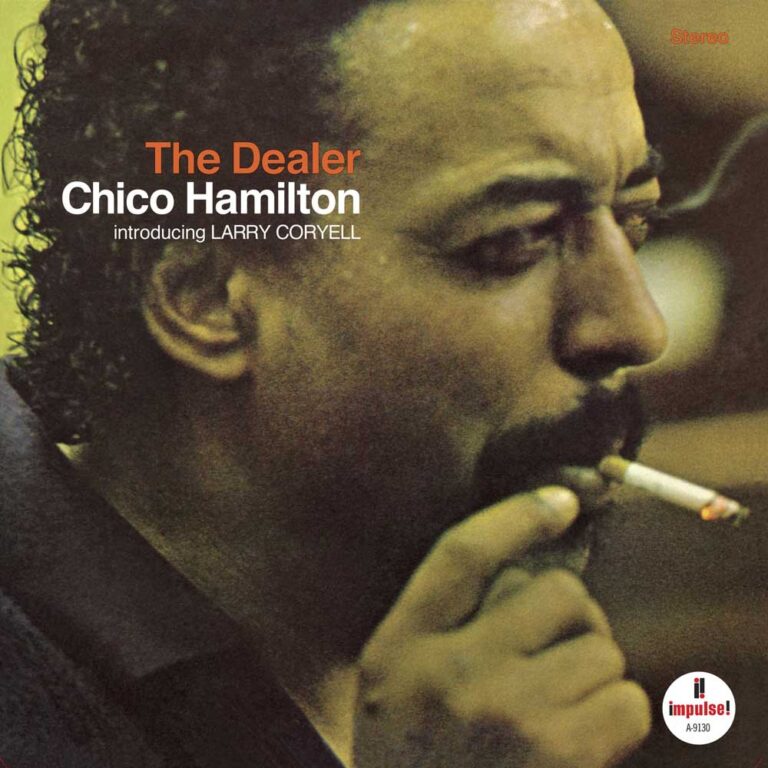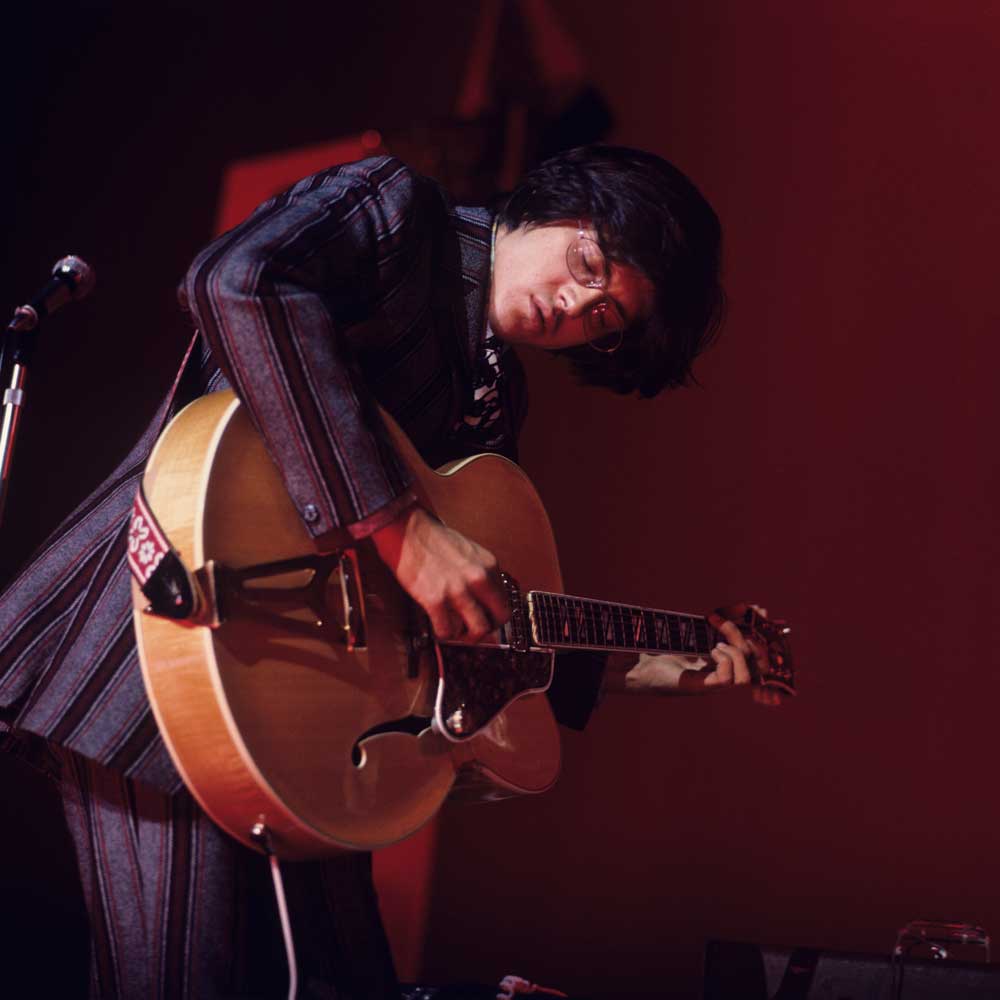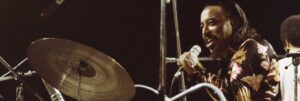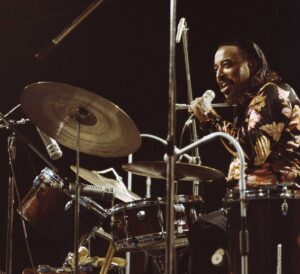Inspired by hearing Jo Jones when he came to California with Count Basie in the 1940s, Hamilton first played drums in a high school band that included Charles Mingus, Dexter Gordon and Illinois Jacquet. He toured with Lionel Hampton, became house drummer at LA jazz club Billy Berg’s and recorded with Lester Young, before joining the band of Lena Horne in 1948 in a tenure that lasted six years. During this time he also played in the famous Gerry Mulligan Quartet, appearing on a number of sessions for Pacific Jazz.

CHICO HAMILTON The Dealer
Available to purchase from our US store.It was with the West Coast label, founded by producer Richard Bock and drummer Roy Harte, that Hamilton debuted with his first album with his Quintet. Unconventional for a jazz group at the time and ever since, he chose a cello as one of the lead instruments played by Fred Katz on two albums for Pacific Jazz. His Quintet also included Jim Hall on guitar (alongside the reeds of Buddy Collette and bass of Carson Smith). It was an instrument Hamilton would have a close affinity with on his groundbreaking albums to come.
In the early 1960s in a rotating line up that had included guitarists John Pisano and Dennis Budimir with the reeds of Paul Horn and Eric Dolphy, Hamilton brought in another guitarist Gábor Szabó alongside saxophonist Charles Lloyd, two musicians who took a similarly revolutionary approach to their instruments.

Writing about the Quintet in his obituary of this most exploratory of drummers and bandleaders in 2013, John Fordham of The Guardian explained how “One that featured a guitarist, a flute or clarinet, a cellist, and a drummer who preferred mallets to sticks seemed a strange beast in the jazz forest.” This iteration of the Quintet would release two albums of hard bop and post bop on Columbia and Impulse!, before their final album “A Different Journey” in 1963.
Firmly ensconced at Impulse! Hamilton recorded four albums for the label under his own name between 1964-6 “Man From Two Worlds”, “Chico, Chic, Chico”, “El Chico”, and “The Further Adventures Of El Chico”. Moving between post bop, modal and Latin Jazz, these sessions were imbued by the unique metallic guitar sound of Gábor Szabó one of many musicians Hamilton mentored.
Another was Larry Coryell who would become known as one of the pioneers of jazz rock. Having learned to play the guitar listening to jazz records by Tal Farlow and Barney Kessel his first group was an R&B band called The Checkers, a duo with Mike Mandel who went on to make his mark in jazz fusion alongside Larry Coryell and Alphonse Mouzon in The Eleventh House. Back in 1965, Coryell gave up his studies at the University of Washington to throw himself into the NewYork jazz scene.
Spotted jamming in Greenwich Village, the young guitarist was taken under the wing of Chico Hamilton who was looking for a replacement for Gábor Szabó who had been working on his debut on Impulse! under his own name “Gypsy ’66.” In Larry Coryell, Hamilton found a guitarist, much like Szabó before him, who was melding both rock and jazz stylings.
The record that launched Larry Coryell into the jazz spectrum was “The Dealer” recorded with Chico Hamilton and producer Bob Thiele for Impulse! in September 1966. The cover photograph by Charles Shabacon shows Chico cooly smoking a cigarette, a clue as to the hip music within, while the words “Introducing Larry Coryell” was a sign of Hamilton’s support for the musicians he brought through. Players like alto saxophonist Arnie Lawrence who completed the line up on this serious session with bassist Richard Davis and organist Ernie Hayes.
The album opens with the title track, one of three numbers co-written and arranged by trombonist Jimmy Cheatham. “The Dealer” sets the tone for one of jazz rock and fusion’s foundation records with the heavy and hypnotic rhythm section of Hamilton and Davis met full on by the spacey, psychedelic guitar licks of Coryell and soaring saxophone of Lawrence.
After the soul jazz dancer “For Mods Only” penned by Impulse! label mate Archie Shepp (who plays piano on the track), comes “A Trip”. Another Hamilton/Cheatham composition, it’s a fitting title for a sonically progressive number that pushed jazz towards psychedelic rock with Larry Coryell’s abstract guitar playing quite unlike anything else in jazz at the time. The album closes with the post bop future jazz dance track “Jim-Jeanie” with Hamilton’s extraordinary drumming augmented by the soaring horn of Lawrence, before Coryell’s heavy guitar passages that predicted things to come.
Larry Coryell’s name would become carved into the foundations of jazz rock as a member of Free Spirits between 1965-1968 and the albums “Spaces and “Barefoot Boy” at the turn of the ‘70s, before joining The Eleventh House, just as Chico Hamilton would continue to explore fusion and jazz funk on albums such as “Peregrinations” and “Chico Hamilton And The Players”. So this 1966 outing can be heard as a pivotal session for the guitarist and an important one for the band leader in his constant drive to nurture and innovate. here
Read on…Gábor Szabó –The Sorcerer
Andy Thomas is a London based writer who has contributed regularly to Straight No Chaser, Wax Poetics, We Jazz, Red Bull Music Academy, and Bandcamp Daily. He has also written liner notes for Strut, Soul Jazz and Brownswood Recordings.
Header image: Chico Hamilton performing at the Montreux Jazz Festival, Switzerland, 8 July 1973. Photo: David Warner Ellis/Redferns/Getty Images.


